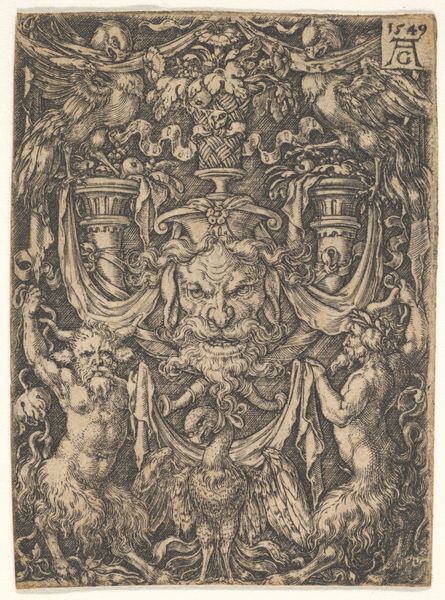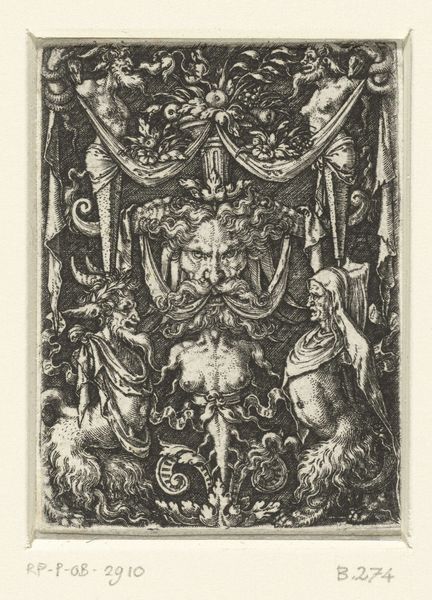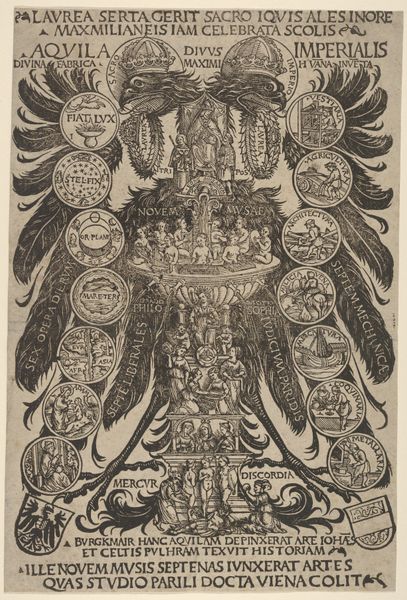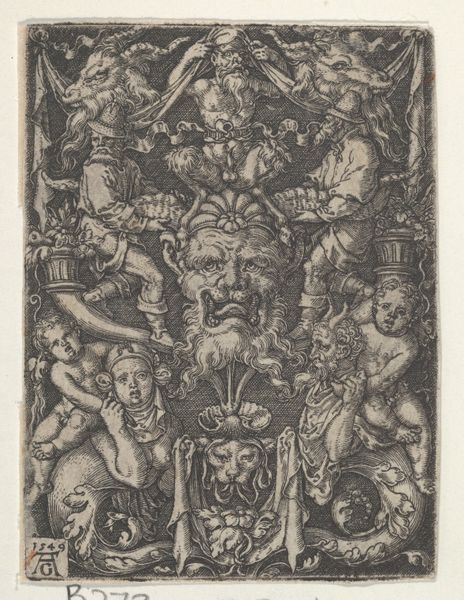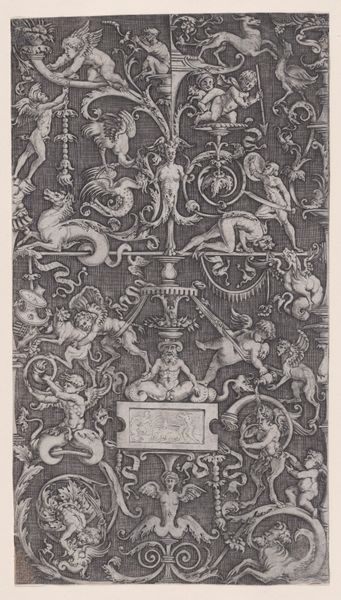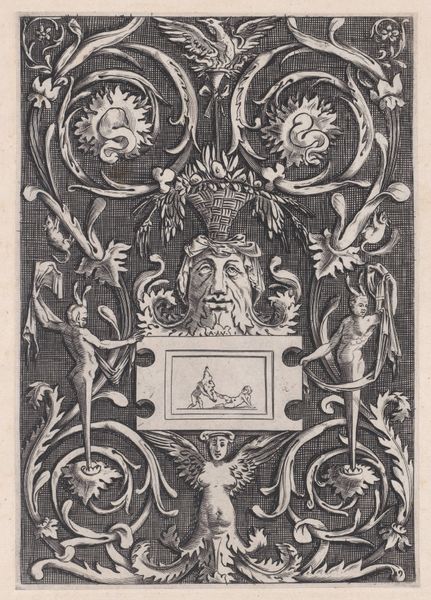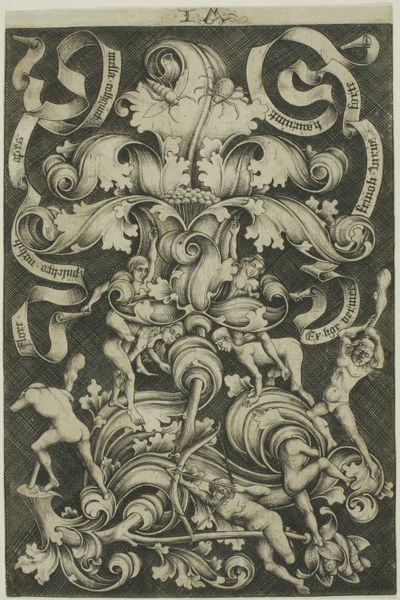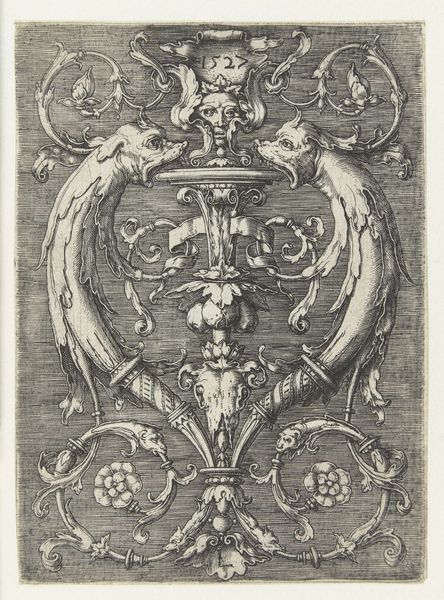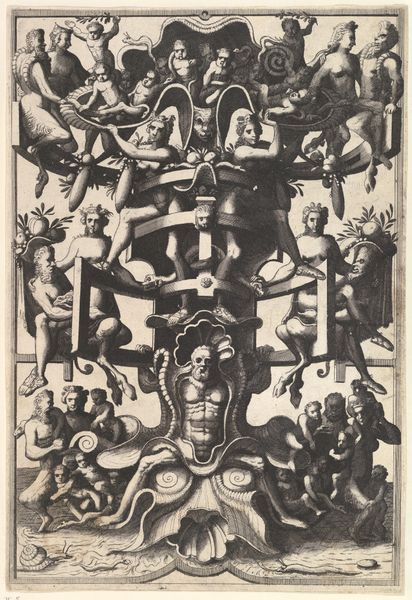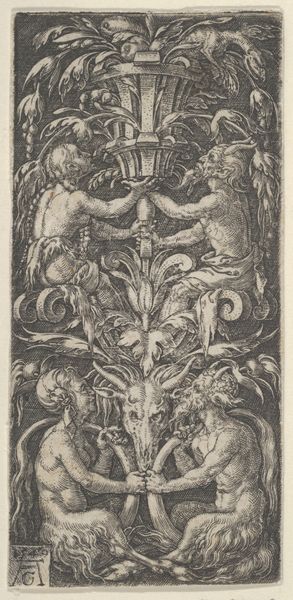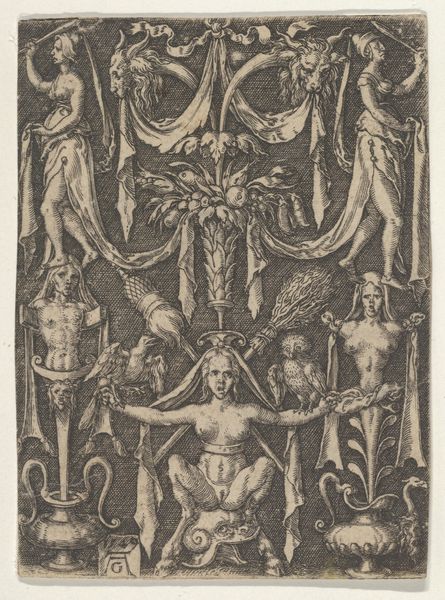
ornament, print, engraving
#
ornament
#
pen drawing
# print
#
figuration
#
11_renaissance
#
northern-renaissance
#
engraving
Copyright: National Gallery of Art: CC0 1.0
Editor: This is "Ornament with Mask, Eagle between Satyrs Below" by Heinrich Aldegrever, from 1549. It’s an engraving, so lines are very crisp and controlled, but overall the mood feels wild and grotesque, in a way. What do you see in this piece? Curator: It strikes me as a fascinating artifact of its time, steeped in the social and intellectual currents of the Northern Renaissance. The grotesque mask, flanked by satyrs, is not merely decorative. How does this imagery play into the anxieties and obsessions surrounding the body, the natural world, and the pagan past, at a time when the Reformation was dramatically reshaping Europe’s identity? Editor: I hadn’t thought about the Reformation! So these wild figures are…reactions to that? Curator: Perhaps veiled commentary. Renaissance artists often used classical and mythological imagery to critique or subvert contemporary social and religious norms. Note the precise, almost scientific rendering of details combined with the fantastical elements. How might that duality reflect the period’s shifting worldview, caught between empirical observation and lingering superstitions? Editor: So the artist is balancing different perspectives, but with the grotesque figures pushed forward? Almost a protest through design? Curator: Exactly! It hints at an undercurrent of resistance. Consider, too, the role of ornament during this era. Ornament wasn't simply about beauty; it was a visual language used to communicate power, status, and worldview. What might this print, intended for dissemination and reproduction, tell us about the values and beliefs the artist hoped to promote, or perhaps challenge? Editor: This really changes how I see ornament – it's not just pretty but also a kind of political statement, like graffiti almost! Curator: Precisely! It highlights how deeply entwined art is with the social, political, and intellectual forces of its time. Editor: This gives me a whole new perspective on Renaissance art; it seems much more alive and engaged with its context. Curator: Indeed, viewing art as a form of social commentary enriches our understanding of both the artwork and the society that produced it.
Comments
No comments
Be the first to comment and join the conversation on the ultimate creative platform.
